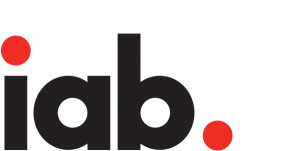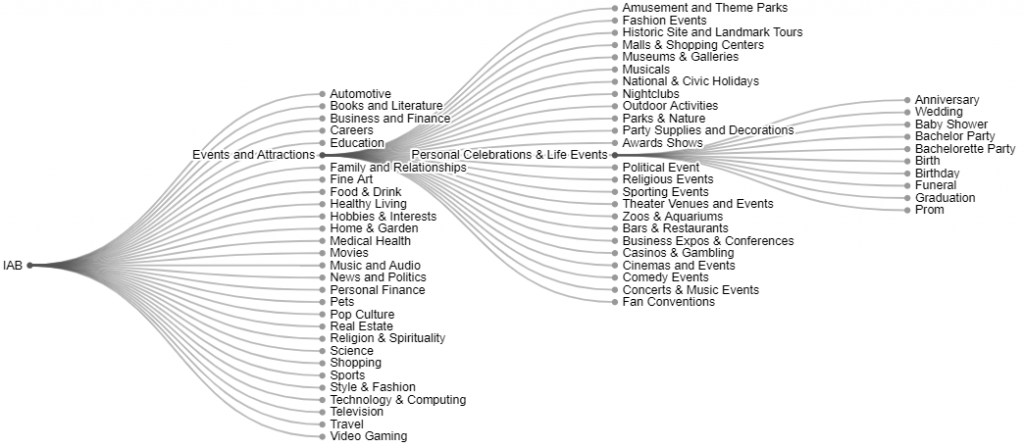 Digital marketing is becoming a fundamental pillar, by leaps and bounds, in the business plans of practically every business model. Methods are being refined and the search for the connection between brand and user is expected to become increasingly more precise: a related advertisement is no longer sufficient, now the advertisement must appear at the right time and in the right place. This is where categorization proves to be an exceedingly useful tool.
Digital marketing is becoming a fundamental pillar, by leaps and bounds, in the business plans of practically every business model. Methods are being refined and the search for the connection between brand and user is expected to become increasingly more precise: a related advertisement is no longer sufficient, now the advertisement must appear at the right time and in the right place. This is where categorization proves to be an exceedingly useful tool.
That is why, at MeaningCloud, we have improved our IAB categorization model in English, that is integrated in our Deep Categorization API:
- Adding a third level of content taxonomy to the hierarchy of categories (IAB Taxonomy Level 3).
- Improving the precision of pre-existing categories.
- Including the unique identifiers defined by IAB itself for each of the categories.
The Interactive Advertising Bureau (IAB) is undoubtedly one of the most influential advertising business organizations in the global marketplace, especially in the United States and Europe. Among its services, it sets a standard for the categorization of any type of content, promoting a trusting environment through the homogenization of concepts and transparent language. In this way, it allows advertisers to manage the context in which their advertisements appear, by preventing them from appearing alongside content that harms their brand image and by boosting their visibility. At the same time, it allows platforms, agencies, and the media to describe the advertising spaces they have available in a clear way and adequately categorize each of their segments.
This classification standard was initially compiled in 2011 by the IAB Networks and Exchanges Committee division into a first version of taxonomy, which was expanded and improved by the IAB Tech Lab division with the release of their Content Taxonomy Version 2.0 in November 2017. The structure was reconstructed to reduce ambiguity and provide greater granularity. Furthermore, categories were updated and expanded in line with the latest social changes and opting for universality, references to specific brands, and countries were removed. The taxonomy is structured in four levels: the first two are fixed and homogenous, the third and fourth are made up of pre-defined categories but can also be extended according to the specific needs of each company. In 2018, at MeaningCloud, we integrated levels 1 and 2 of this standard into our Deep Categorization API.
However, the need for precision by brands in the categorization of content has continued to grow exponentially. To address this need, we have included level 3 of the IAB content taxonomy. As follows, in the new version we have not only improved the precision of pre-existing categories, but we have also added 268 categories, contemplated in the Content Taxonomy Version 2.0 for level 3. Thus, a total categorization of 698 categories, hierarchized in three levels, are offered.
What does this third level contribute to the categorization obtained? A more granular view of the categorization, as this level is specifically designed to maximize the value of online advertising and to categorize the content as accurately as possible. Using the more specific layers, the user will be able to distinguish between 32 types of industries, 13 styles of videogames, 6 distinct areas, all related to the word of beauty, or, as shown in the picture, 10 types of celebrations or events.
This is not the only new feature this new version has to offer. As a result of the feedback received since the release of our previous version, we have decided to associate categories obtained in the output of our API, next to the category name, with the unique identifier assigned by IAB in its Content Taxonomy 2.0.
This same year, the IAB has published Content Taxonomy 2.1, an update of its content taxonomy. Out of concern for security and brand suitability, it introduces an SCD indicator over each node to identify sensitive or personal data. Based on this concern, at MeaningCloud we are working to, soon, include this feature in our categorization.
Like the previous version (2.0), our new version of the categorization model has been published as a predefined model and is freely available to users of our Deep Categorization API. This API, which can be integrated from various programs and platforms, is capable of assigning one or several categories of a given taxonomy to a large mass of written content, in real-time and providing maximum accuracy and efficiency.
At the moment, this new version is only available in English, but it will soon be available in other languages. If you would like to know more about our Deep Categorization API, our new version of IAB or you have any other questions, please do not hesitate to contact us directly!

